Human Orbital Spaceflights
![]()
International Flight No. 95STS-41CChallenger (5)11th Space Shuttle missionUSA |
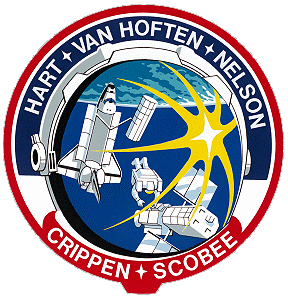 |
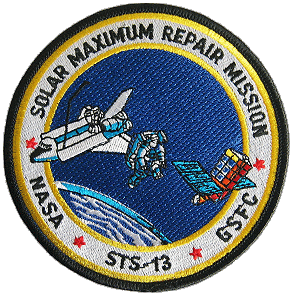 |
|
Source: www.spacepatches.nl |
||
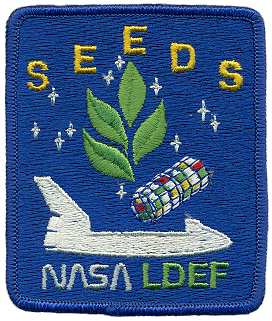 |
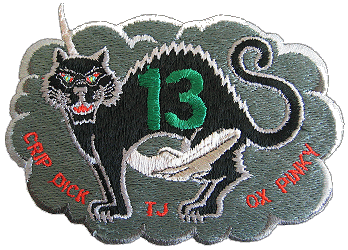 |
![]()
Launch, orbit and landing data
walkout photo |
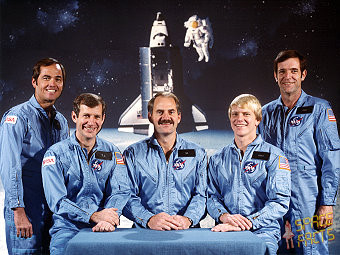 |
||||||||||||||||||||||||||||
Crew
| No. | Surname | Given names | Position | Flight No. | Duration | Orbits | |
| 1 | Crippen | Robert Laurel "Crip" | CDR | 3 | 6d 23h 40m 06s | 108 | |
| 2 | Scobee | Francis Richard "Dick" | PLT | 1 | 6d 23h 40m 06s | 108 | |
| 3 | Hart | Terry Jonathan "T.J." | MS-1, RMS | 1 | 6d 23h 40m 06s | 108 | |
| 4 | van Hoften | James Dougal Adrianus "Ox" | MS-2, EV-2, FE | 1 | 6d 23h 40m 06s | 108 | |
| 5 | Nelson | George Driver "Pinky" | MS-3, EV-1 | 1 | 6d 23h 40m 06s | 108 |
Crew seating arrangement
|
 |
|
||||||||||||||||||||||||
Hardware
| Orbiter : | OV-099 (5.) |
| SSME (1 / 2 / 3): | 2109 (2.) / 2020 (1.) / 2012 (5.) |
| SRB: | BI-012 |
| ET: | ET-12 (LWT-5) |
| OMS Pod: | Left Pod 03 (1.) / Right Pod 01 (5.) |
| FWD RCS Pod: | FRC 9 (5.) |
| RMS: | 302 (1.) |
| EMU: | EMU No. 1043 (PLSS No. 1008) / EMU No. 1044 (PLSS No. 1009) / EMU No. 1045 (PLSS No. 1007) |
Flight
|
Launch from Cape Canaveral (KSC) and
landing on the Edwards
AFB, Runway
17. During the launch phase (ascent) the main computer in Mission Control failed, as did the backup computer. For about an hour the controllers had no data on the space shuttle. The mission marked the first direct ascent trajectory for the Space Shuttle; Challenger reached its 288-nautical-mile-(533-km)-high orbit using its Orbiter Maneuvering System (OMS) engines only once, to circularize its orbit. The flight had two primary objectives. The first was to deploy the Long Duration Exposure Facility (LDEF), a passive, retrievable, 12-sided experimental cylinder. The second objective of STS-41C was to capture, repair and redeploy the malfunctioning Solar Maximum Mission satellite ("Solar Max"), which had been launched in 1980. The crew deployed the Long Duration Exposure Facility (LDEF-01), carrying 57 experiments. LDEF- 01 was retrieved during mission STS-32 in 1990. NASA's Long-Duration Exposure Facility (LDEF) was a large structure that put 57 scientific, applications and technology experiments into Earth orbit. The LDEF experiments range in research interest from materials to medicine to astrophysics. All of them require free flying exposure in space, but no extensive electrical power, data handling or attitude control systems. Many of the experiments were relatively simple and some stayed completely passive while in orbit. The results of their exposure in space were analyzed in post-fight laboratory investigations after LDEF was returned to Earth. LDEF was deployed into a circular orbit on the second day of the mission, beginning at about one day, 15 minutes mission elapsed time, when the orbiter's Remote Manipulator Systems (RMS) was activated by mission specialist Terry Hart. The RMS end effector engaged a grapple fixture on the LDEF structure to activate an experiment-initiation system (EIS), which turned on those experiments that require power. The LDEF then moved to a second LDEF grapple fixture to begin the deployment. LDEF was placed in a gravity-gradient stabilized attitude, inclined approximately 28.5 degrees to Earth, and at an altitude of 250 nautical miles (288 statute miles = 463 km). Once LDEF was positioned, the orbiter stabilized itself and the payload before LDEF was released. After deployment was completed, the orbiter fired small thrusters to separate itself from LDEF at a speed of half a foot per second. The orbiter then tracked LDEF for about an hour. LDEF was a 12-sided, open-grid structure made of aluminum rings and longerons (fore-and-aft framing members). The structure was 9.14 m (30 ft.) long, 4.27 m (14 ft.) in diameter and had a mass of 3,360 kg (8,000 lb.). LDEF hold 86 experiment trays, 72 around the circumference, six on the Earth-pointing end and eight on the space-pointing end. A typical tray measures 127 x 86.4 cm (50 x 34 in.) and is available in one of three depths: 7.6, 15.2 and 30.5 cm (3, 6 and 12 in.). The trays were made of aluminum and could hold experiments that weigh from 81.6 to 90.7 kg (180 to 200 lbs.). Some experiments filled more than one tray, some filled only part of a tray. All of the trays and their experiments weigh only 6,078 kg (13,400 lbs.). Total weight of the structure, trays and experiments was 9,707 kg (21,400 lbs.). STS-41C marked the first "Shuttle repairing mission". On the third day of the mission, Challenger's orbit was raised to about 300 nautical miles (560 km), and it maneuvered to within 200 feet (61 m) of the stricken Solar Max satellite. George Nelson and James van Hoften performed the first EVA on April 08, 1984 (2h 38m) to capture the satellite. After entering Challenger's payload bay, the spacewalkers discovered that the payload bay door slidewires were looser than expected. George Nelson donned the MMU, then attempted to dock with Solar Max using the TPAD mounted between the hand controller arms. He bounced off Solar Max after the TPAD jaws failed to close on one of the satellite's berthing docking pins. Solar Max began to spin. Twice more he attempted to latch onto the satellite with the TPAD, each time adding to the slow spin. His difficulties were later traced to an obstructing grommet on Solar Max which did not appear in its blueprints. George Nelson then tried to stabilize the satellite by gripping one of its two solar arrays and activating the MMU's automatic attitude hold feature, but this reversed the spin and started an unpredictable tumble about two axes. Solar Max lost its lock on the Sun and began draining its batteries. George Nelson was forced to return to Challenger when his MMU nitrogen propellant supply ran low. MMU co-designer Charles Whitsett said later that the MMU's operating temperature was low, reducing nitrogen pressure, so there was probably more nitrogen available than George Nelson thought - perhaps enough for another stabilization attempt. The astronauts and Mission Control considered changing MMUs and TPADs and trying again, but Challenger's rendezvous fuel was running low, threatening the orbiter's ability to recover a stranded MMU astronaut. A subsequent attempt by Terry Hart to capture the satellite using the RMS failed because of the tumble. The astronauts returned to the airlock. During the night of the third day, the Solar Max POCC, located at Goddard Space Flight Center, Greenbelt, Maryland, was able to establish control over the satellite by sending commands ordering the magnetic torque bars to stabilize the tumbling action. This was successful, and the Solar Max went into a slow, regular spin. The next day, Robert Crippen maneuvered Challenger back to Solar Max. On April 11, 1984 George Nelson and James van Hoften left the Space Shuttle for another spacewalk (6h 44m). Terry Hart was able to grapple the satellite with the RMS. They placed Solar Max on a special cradle in the payload bay using the RMS. George Nelson and James van Hoften then began the repair operation, replacing the satellite's attitude control mechanism and the main electronics system of the coronagraph instrument. The ultimately successful repair effort took two separate spacewalks. Using a device known as the Module Service Tool (MST), James van Hoften unscrewed two retention bolts, removed the module, and replaced it with a spare module, which had been fastened to the lower portion of the Flight Support System. Then, the more difficult task of replacing the Main Electronics Box (MEB) on the Polarimeter/Polarimeter began. It was more difficult because the spacesuit gloves are bulky, and the exchange requires working with scissors and small screws. James van Hoften unfolded and taped back the protective thermal blanket, removed the remaining screws on the panel and secured it open with a special bracket. James van Hoften had now to unscrew 22 screws, each with a head no bigger than one-eighth of an inch while wearing gloves that one might compare with boxing gloves. The screws hold 11 electrical connectors. James van Hoften then had to cut some additional wiring before he could remove the electronics box. The electronics box was removed and stowed in the FSS locker. A replacement unit was moved into position, at which time George Nelson and James van Hoften exchanged roles. George Nelson remated the MEB's 11 electrical connectors with clips, eliminating the need to reinstall the previously removed screws. He then removed the panel support bracket, close the panel door, secured the six panel screws, and reinstalled the thermal protection. The next day, Terry Hart positioned the spacecraft above the Shuttle, and - after receiving word from Goddard that the spacecraft is "go" for release - gently dropped it from the arm's grasp, placing it back in orbit. The Shuttle stationed keep about 61 to 91 m (200 to 300 ft.) away for approximately two hours and remained in relatively close. Other payloads on this mission were the Radiation Monitoring Equipment (RME) and the Shuttle Student Involvement Program (SSlP) experiment. A colony of honey bees, about 3,300 in all, were aboard the orbiter. The purpose of the experiment was to compare quantitatively the size, shape, volume and wall structure of the honeycomb structures. The experiment attempted to determine the characteristics of the hive construction of Apis mellifera honey bees in a zero-gravity environment. The experiment found that honeybees can successfully make honeycomb cells in a microgravity environment. A Cinema 360 camera was carried aboard the Challenger to provide a test for motion picture photography in a unique format designed especially for planetarium viewing. One camera was located in the crew cabin area and the other in a GAS canister in the payload bay. The primary objective was to test the equipment and concept. Arriflex 35 mm Type 3 motion picture cameras with an 8 mm/f2.8 "fisheye" lens were used. The Cinema 360 camera, including an accessory handle and lens guard/support, weighs approximately 9.5 kg (21 lb.). A system power supply weighs an additional 7.7 kg (17 lb.). Highlights of the mission, including the LDEF deployment and the Solar Max repair, were filmed using an IMAX movie camera, and the results appeared in the IMAX movie "The Dream is Alive". The IMAX camera is part of a joint project among NASA, the National Air and Space Museum, IMAX Systems Corp. of Toronto, Canada, and the Lockheed Corp. to produce a color motion picture of Shuttle flight operations from launch to landing. One 70 mm motion picture camera was stowed in the middeck with several lenses, two loaded film magazines, and five rolls of reload film. The mission duration was extended for one day, due of problems retrieving Solar Max. |
EVA data
| Name | Start | End | Duration | Mission | Airlock | Suit | |
| EVA | Nelson, George | 08.04.1984, 14:?? UTC | 08.04.1984, 17:?? UTC | 2h 38m | STS-41C | Challenger | EMU No. 1043 |
| EVA | van Hoften, James | 08.04.1984, 14:?? UTC | 08.04.1984, 17:?? UTC | 2h 38m | STS-41C | Challenger | EMU No. 1044 |
| EVA | Nelson, George | 11.04.1984, 08:?? UTC | 11.04.1984, 15:?? UTC | 6h 44m | STS-41C | Challenger | EMU No. 1043 |
| EVA | van Hoften, James | 11.04.1984, 08:?? UTC | 11.04.1984, 15:?? UTC | 6h 44m | STS-41C | Challenger | EMU No. 1044 |
Photos / Graphics
 |
 |
 |
 |
 |
 |
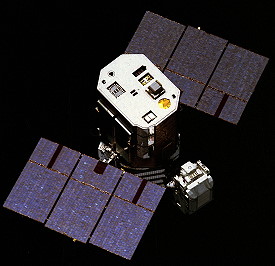 |
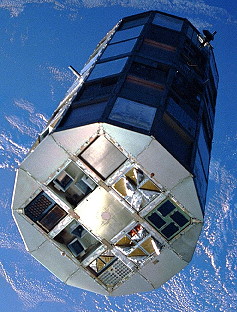 |
 |
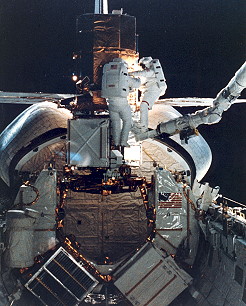 |
 |
 |
 |
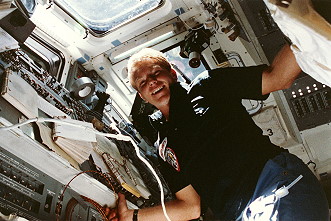 |
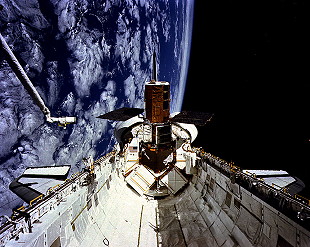 |
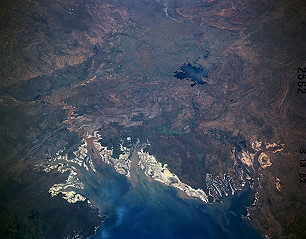 |
 |
 |
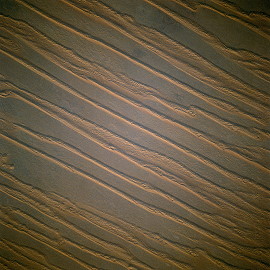 |
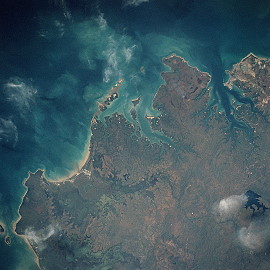 |
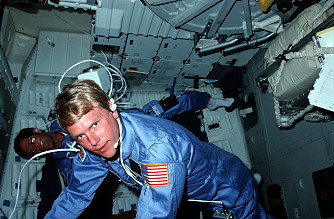 |
 |
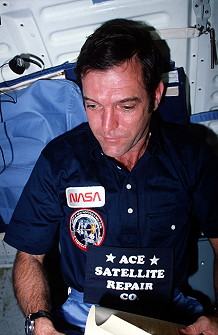 |
 |
more EVA photos |
|
| © |  |
Last update on March 27, 2020.  |
 |